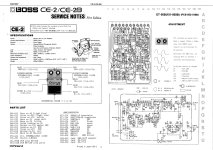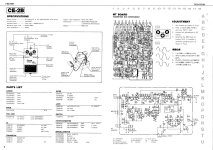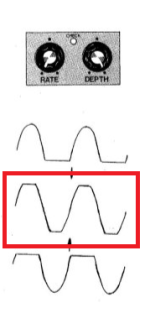Hey guys
I figured I'd just post a thread to cover this one topic on tuning the Chorus pedal.
Attached are the Service Notes form BOSS for the CE-2 and CE-2B!
It shows the potentiometer settings and how to set the signwave.
It shows an 200Hz signal on the input, but +3dBm of amplitude?!?
I have a handheld audio signal generator unit and can select the frequency, but there is a trimmer on it to set the voltage, but nothing in regard to dbm!
So my question is...what VOLTAGE to set the unit at? As I can put the O-scope on it and adjust to an RMS voltage amplitude...if known.
What is the calculation if there is one for dbm to Voltage?? Is this chart in the link accurate?? It as well as others I Googled and did my due dilligence had calculations, but asked for information I did not know, such as in this one...it'll calculate Volts rms to dBm...I could plug voltages, but is asking for OHMS!! I have no idea what this is (as others)!!
This chart is suggesting +3dbm is equal to 315.853V rms.
PLEASE CONFIRM.
https://www.engineersedge.com/instrumentation/Volts_to_dBm.htm


I figured I'd just post a thread to cover this one topic on tuning the Chorus pedal.
Attached are the Service Notes form BOSS for the CE-2 and CE-2B!
It shows the potentiometer settings and how to set the signwave.
It shows an 200Hz signal on the input, but +3dBm of amplitude?!?
I have a handheld audio signal generator unit and can select the frequency, but there is a trimmer on it to set the voltage, but nothing in regard to dbm!
So my question is...what VOLTAGE to set the unit at? As I can put the O-scope on it and adjust to an RMS voltage amplitude...if known.
What is the calculation if there is one for dbm to Voltage?? Is this chart in the link accurate?? It as well as others I Googled and did my due dilligence had calculations, but asked for information I did not know, such as in this one...it'll calculate Volts rms to dBm...I could plug voltages, but is asking for OHMS!! I have no idea what this is (as others)!!
This chart is suggesting +3dbm is equal to 315.853V rms.
PLEASE CONFIRM.
https://www.engineersedge.com/instrumentation/Volts_to_dBm.htm


Last edited:




